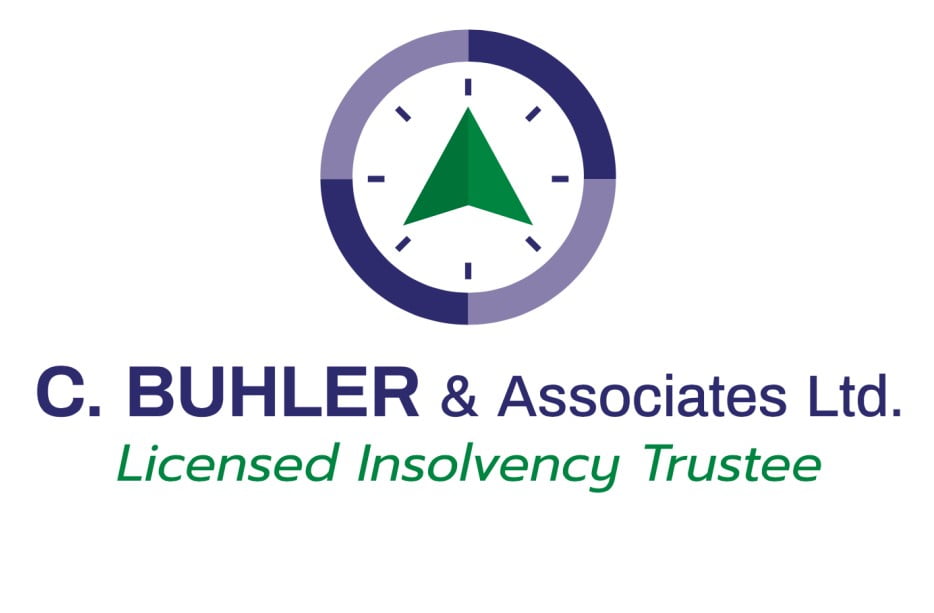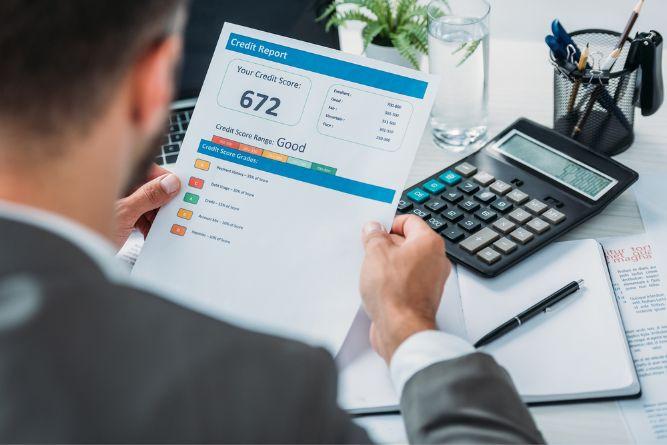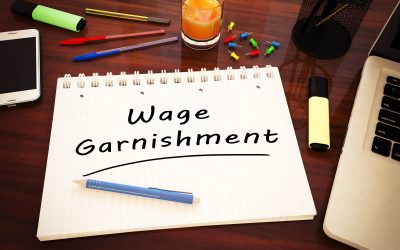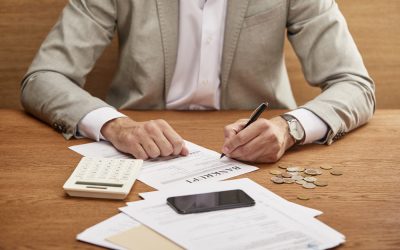Have you recently declared personal bankruptcy? It might not seem like an easy decision, but in many cases, it can be a helpful solution for your financial situation when there isn’t any other way out. Even though declaring bankruptcy can negatively impact your credit—it’s not forever—though it can be challenging to recover financially after you’ve fulfilled your bankruptcy duties.
But what if we told you there was a way to start rebuilding your credit after bankruptcy? You’re going to want to rebuild your credit so that you have access to financial products in the future.
Below, we’ll review the bankruptcy process and how to rebuild your credit after declaring bankruptcy:
What Happens During the Bankruptcy Process?
Filing for bankruptcy means you’re unable to pay off your substantial debts on your own. When debtors can’t pay off their debts, they may have their bank accounts frozen or face wage garnishments. Filing for bankruptcy can prevent those negative consequences.
Licensed Insolvency Trustees (LITs) are the only professionals that can administer bankruptcies. During bankruptcy, you may have certain assets exempted by provincial or federal law. When you meet with your Licensed Insolvency Trustee, you’ll fill out the required forms, and they will file the documents with the OSB (Office of the Superintendent of Bankruptcy). Once those documents have been filed, you will be considered formally bankrupt.
Your LIT will deal with your creditors on your behalf. Moving forward, you will stop making payments to your creditors, any wage garnishments will end, and any lawsuits against you by your creditors will stop. In certain cases, your LIT will sell assets that aren’t exempt from bankruptcy and then hold the money from the sale and distribute it to your creditors.
You will also have specific duties to complete when filing for bankruptcy, such as:
- Disclose all information about your assets and liabilities to your LIT.
- Surrender your credit cards to your LIT.
- Report payments and monthly income.
- Provide details to complete your income tax return.
- Attend two credit counselling sessions.
What Debts Does Bankruptcy Clear?
Filing for bankruptcy can eliminate all of your unsecured debts, and payments on assets that you surrender as part of the process, such as the following:
- Credit cards
- Bank and payday loans
- Lines of credit
- Income tax debts
- Medical bills
- Student loans (if you’ve been out of school for more than seven years)
How To Rebuild Your Credit
Once you’ve officially been discharged from bankruptcy and you’ve fulfilled your duties, you can begin working to rebuild your credit.
Here are some helpful tips to rebuild credit:
Pay Your Bills on Time
Even though you’re erasing your debts, you still have to manage the monthly bills coming your way. That’s why it’s essential that you pay your bills on time and in full. Your payment history is a major factor in calculating your credit score, and rebuilding your credit. We suggest organizing and scheduling your payments to ensure you stay on top of their due dates. Avoid missing payments by tracking expenses such as utilities, cell phone bills, and internet costs.
If you choose to get a credit card after bankruptcy, we suggest always trying to pay off the entire bill each month. If that’s not possible, you should pay at least your minimum monthly payments to avoid negatively impacting your credit score.
Check Your Credit Report
The best way to repair your credit after bankruptcy is to familiarize yourself with your credit report. You can receive a free copy of your credit report by making a request to a credit bureau company like Equifax or TransUnion. You can receive the report online, by mail, or in person.
Your credit report can help you understand what makes up your credit score and determine ways to improve it. You’ll also be able to spot any errors made on the report that could be lowering your credit score.
Get a Secured Credit Card
Declaring personal bankruptcy can put a dent in your credit score and will make it less likely for you to receive an unsecured credit card. You might need some form of credit card to help you rebuild your credit, and that’s where secured credit cards come in.
Receiving a secured credit card won’t depend on the state of your credit history. These cards are useful for anyone with poor credit and require a deposit of $200-$500 to obtain. If you use a secured credit card responsibly and pay it off on time, it will be reported to major credit bureaus and show that you’re developing good financial habits. After some time, you should see an increase in your credit scores.
Apply for New Credit Cards
Once you’ve used a secured credit card long enough and demonstrated your trustworthiness with credit, your improved credit score will help when you try applying for an unsecured credit card. Keep in mind that when researching unsecured credit card options, some card issuers may have specific policies regarding your previous bankruptcy. Some issuers may require you to be discharged from bankruptcy for a certain period of time before being eligible to receive a card.
When you apply for an unsecured credit card, try to look for cards with lower interest rates and annual fees.
Don’t Apply for Too Much Credit
It’s possible to obtain a credit card after bankruptcy, but it’s pivotal that you avoid applying for too many credit products at once. Any time you apply for a credit card or loan, your credit report will be pulled by a creditor or lender during the application process. This process is referred to as a “hard inquiry.”
A hard inquiry can cause your credit score to dip and remain on your credit report for 3 years with Equifax or 6 years with TransUnion. All that will do is show lenders that you’re in financial distress, which may negatively impact your eligibility for credit.
Apply for a Savings Loan
Some companies offer a savings loan as a credit-building opportunity. A savings loan works just like a regular one, except it doesn’t require any money upfront. Instead, you’ll make payments directly to the company for a specific amount of time.
Any time you make a payment, it will be reported to the credit bureaus, indicating that you can keep up with your payments. Once you’ve made the payments during the agreed-upon time frame, you will get your money back. If you are interested in this option, be sure to work with a local lender, and review the contract carefully.
Open a New Chequing & Savings Account
Opening a new chequing and savings account can help recently bankrupt individuals start fresh and set long-term financial goals. We recommend aiming for options that will decrease the number of banking fees and increase interest on your new savings.
Once your bankruptcy is removed from your credit history, the details on your credit report will highlight the choices you’ve made since filing. Ensure that you move sources of income and the payments that you want to continue making to your new account.
Only Make Affordable Purchases
With new bank accounts and credit cards, it may be tempting to fall back into your old spending habits and financial decisions. Budgeting is crucial, especially after you’ve declared bankruptcy. Try not to make any unnecessary transactions on credit, as it will take longer to rebuild.
Make sure you’re only spending money on the things you can afford. Consider cancelling subscriptions to streaming services or finding cheaper cell phone plans, and do your research on all utility contracts you sign.
Be Wary of Credit Repair Scams
Believe it or not, there are scammers looking to take advantage of people in financial distress. Some services advertise to remove negative information from your credit report, but be wary. Remember, your bankruptcy will remain on your report for six years following your discharge, and there is nothing you can do to remove it sooner. At the end of the day, the only person that can rebuild your credit is you.
Is There an Alternative Option to Bankruptcy?
There may be another option instead of bankruptcy, such as a consumer proposal. Consumer proposals are a popular alternative as they consolidate your debt into monthly payments made to your LIT, and can reduce interest and decrease the total you owe overall. A consumer proposal allows you to avoid losing your secured assets or other assets that may be lost when filing for bankruptcy—that’s why it can be an appealing option to some debtors.
A consumer proposal may not be a valid option for everyone. You can discuss this option with your Licensed Insolvency Trustee; they’ll review your alternatives to achieve a debt-free life.
Filing for bankruptcy is the first step in finding debt relief. You’ll receive a free consultation when you make an appointment with one of our debt specialists today. We assure you that we will provide all the information you need to make an informed decision about your financial future.





